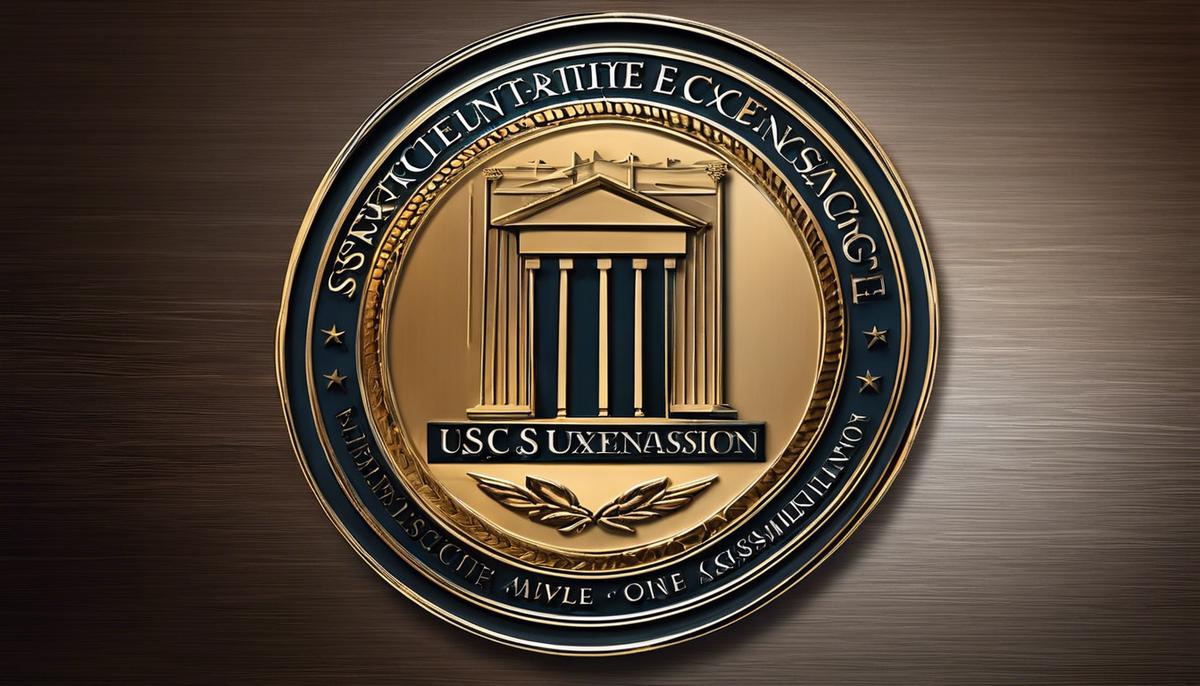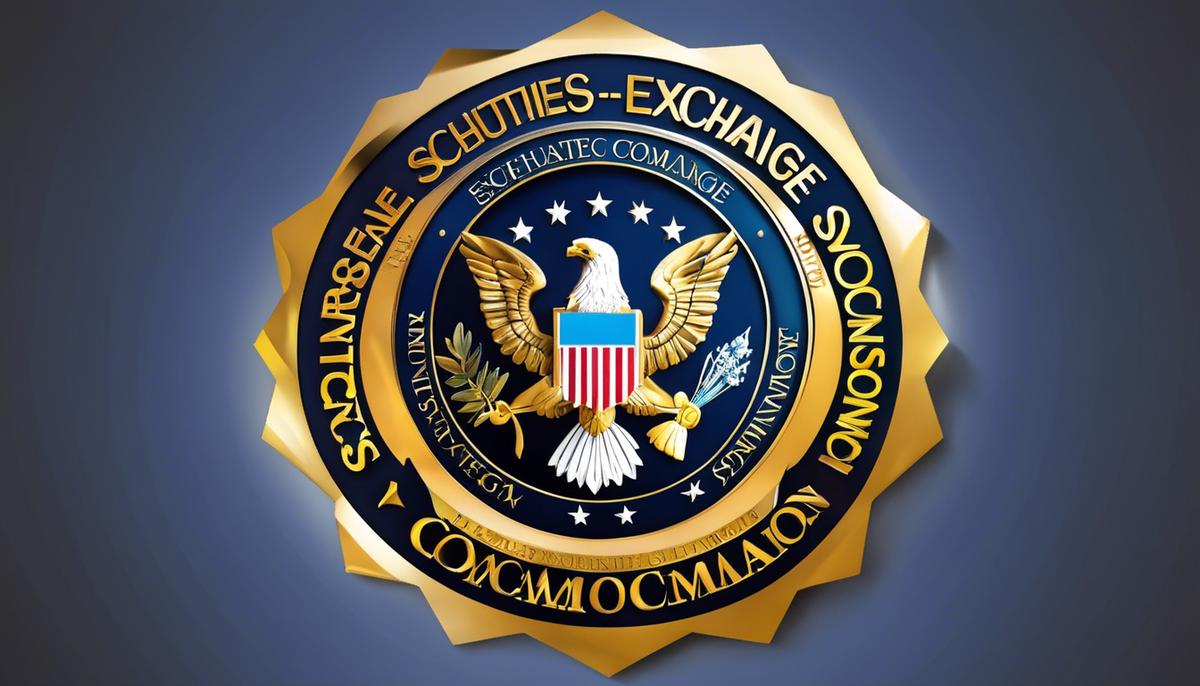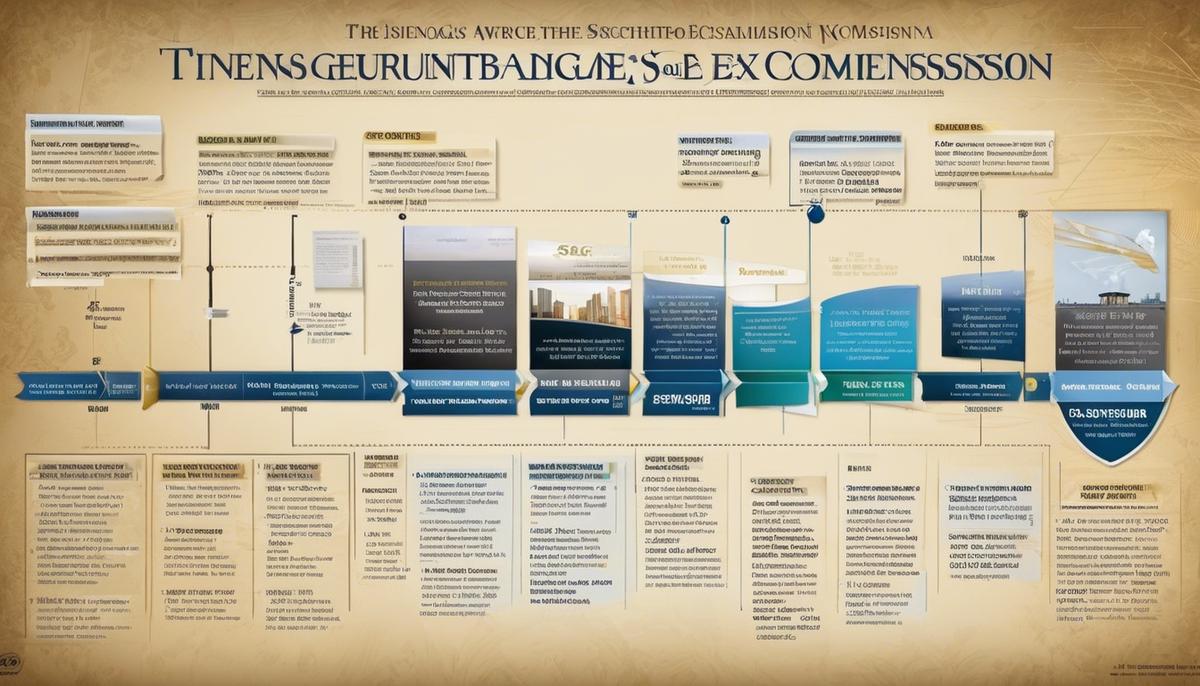In the intricate system of economic and financial structures, the Securities and Exchange Commission (SEC) shines conspicuously as a pivotal organization. Its establishment in the United States during the Great Depression marked the initiation of a period of comprehensive securities regulation, intended to foster investor confidence and cultivate a sturdy landscape for economic development. Crucial to comprehending the role of SEC is an exploration of its historical origins, the objectives established at its inception, and the societal conditions that necessitated its formation.
The Origin and Formation of Securities and Exchange Commission (SEC)
Evolution, Historical Backdrop, and Formation of the U.S. Securities and Exchange Commission
The creation of the U.S. Securities and Exchange Commission (SEC) in 1934 was not envisaged in a vacuum. It was the culmination of years of evolution and historical developments in American business and financial practices, wrought with the necessity of balancing economic growth and consumer protection. This article will lend focus on how the layers of historical and evolutionary forces orchestrated the formation of the SEC.
Dating back to the 18th-century, the United States operated without comprehensive regulations governing securities. Early stock exchanges functioned under minimal oversight, laying fertile grounds for unscrupulous trading practices and financial manipulations. The number and scale of these financial scandals intensified by the 19th century, precipitating the need for robust regulations for the securities industry.
Deep in the heart of the 1920s, the United States basked in the euphoria of the post-World War I economic boom. The stock market was at an unprecedented high, attracting everyone from the affluent to the ordinary. Blue skies laws were enacted in various states to protect investors from securities fraud, but the implementation was fragmented and ineffective due to jurisdictional limitations.
Fast forward to October 1929, the Wall Street crash caused economic havoc, leading the country headfast into the Great Depression. This colossal failure triggered a public outcry for widespread reform to regulate securities and protect investors from fraudulent manipulation. It allowed lawmakers to reevaluate the drawbacks of the gung-ho free-market liberalism that had prevailed.
In the wake of this financial turmoil, Congress convened hearings, the Pecora Hearings, named after their fierce leader, Ferdinand Pecora. The damaging revelations from these hearings about Wall Street’s underlying flaws prompted Congress to initiate regulatory reforms, the first of which was the Securities Act of 1933. This Act sought to enhance transparency in financial statements to enable investors to make informed decisions.
Realizing the necessity of direct oversight rather than mere transparency, Congress moved quickly to pass the Securities Exchange Act of 1934, which established the SEC. This new regulatory body was tasked with enforcing the newly passed securities laws, regulating the markets, and protecting investors. The trajectory of these legislative auspices signaled a shift from a laissez-faire economic landscape to a more regulated financial ecosystem.
The formation of the SEC was the culmination of evolutionary forces in American business practices and a series of financial calamities that exposed the stark inadequacies of existing regulations. It was constructed on the dual pillars of the need for investor protection and a healthy, transparent well-regulated marketplace. With a better understanding of its historical origins, the continuing relevance and critical role of the SEC in current financial regulation become keenly apparent.
By appreciating the history and evolution leading up to the SEC’s establishment, it becomes increasingly clear that this pivotal regulatory body did not materialize from a legislative afterthought. Rather, it was a carefully thought out response to the financial challenges and lessons accrued over the decades, with a key focus on ensuring a well-functioning, transparent marketplace and investor protection. The existence and effectiveness of the SEC, therefore, stand as a testament to the fact that financial regulation, like many other aspects of human life, is neither static nor isolated, but rather a dynamic construct shaped by the trials, errors, and experiences of previous generations.

The Role and Responsibilities of SEC
Diving deeper into the regulatory landscape of the economic sector, eyes are drawn towards the Securities and Exchange Commission (SEC), an entity born from the crucible of financial excess and deception. An understanding of the SEC’s vast and complex nuances – its precise roles, responsibilities, and powers – is imperative for the comprehension of how the mechanism of market integrity is safeguarded.
The SEC bears the mantle of three-faceted duties: to protect investors; maintain fair, orderly, and efficient markets; and facilitate capital formation. Considering the gravity of these roles, it wields powers being principal overseer and regulator of the securities industry. It develops rules and regulations, supervising both corporate disclosures to the public and the operations of exchanges, brokers, and advisors.
In its capacity as investor guardian, the SEC safeguards ignorant parties from the deceptive intricacies of corporate machinations. Companies offering securities to the public are obliged to disclose truthful and significant financial data to the SEC, a mandate robustly enforced to deter fraud and corporate malfeasance.
Assuming its mandate to sustain fair and efficient markets, the SEC enforces regulations promoting transparency, integrity, and competitiveness in the market. By prohibiting insider trading and ensuring the clarification of company financial statements, the SEC cultivates a level playing field imperative for the market’s orderly functioning.
Facilitating capital formation manifests in the SEC’s approach to easing the path for companies to publicly raise funds. Unnecessary regulatory obstacles are removed, creating a facilitating environment for entities to reach potential investors and realize their economic potential.
Pertinently, enforcement is key to the SEC’s arsenal in regulating equity trading. The SEC, empowered by the Securities Act of 1933, can bring civil enforcement actions against individuals or companies alleged to have committed accounting fraud, provided false information, or engaged in insider trading or other violations of the securities law. The regulator can also work with law enforcement agencies to prosecute individuals and firms for offenses including a securities role.
Additionally, the SEC takes a proactive approach in the form of inspections and examinations. Regular scrutiny ensures exchanges, brokers, asset managers, and investment advisors comply with laws designed to protect investors.
Furthermore, the SEC harnesses technology for market surveillance, using automated systems to identify unusual market activities indicative of violations. It also keeps track of industry-wide developments through the office of the Chief Economist, thereby maintaining its regulatory acuity amidst changing financial landscapes.
Precisely managing the roles, powers, and responsibilities vested within it, the SEC serves as the bulwark of market integrity. Consequently, the complex world of securities can function with a measure of predictability, backed by the certainty of protection and oversight that the SEC diligently provides. This, undoubtedly, makes the Securities and Exchange Commission an integral pillar in the edifice of the modern financial marketplace.

The Impact and Influence of SEC on Financial Market & Economy
With the establishment of the Securities and Exchange Commission (SEC), the financial fabric of the United States experienced a pivotal transformation. The SEC not only assured investor protection but also worked tirelessly to maintain orderly and fair markets while facilitating the process of capital formation. By undertaking such broad responsibilities, the SEC significantly began to mold the overarching financial ecosystem, leaving an indelible imprint on the socio-economic texture at large.
Different entities in the securities industry, such as exchanges, brokers, asset managers, and investment advisors, come under the vigilant gaze of the SEC. The commission conducts meticulous inspections and examinations to ascertain their compliance with investor protection laws. This active role of oversight ensures that negligent or malignant practices are curbed early on, thereby preventing harm to investors’ interests. By maintaining a constant check on these entities, the SEC impresses upon the players in the industry the imperatives of honesty, integrity, and diligence, hence fostering a culture of ethical business practices.
One of the central mandates of the SEC is to necessitate companies publicizing securities to disclose complete, accurate, and timely financial data. With this requirement firmly in place, the power of decision-making is effectively passed into the hands of investors who can now make informed judgments regarding their investments. This operation of transparency and investor empowerment underscores the democratic ethos at the heart of the SEC’s conduct – a testament to its overarching influence on the financial market.
In addition to the abovementioned roles, the execution of regulatory enforcement is well within the powers of the SEC. The commission wields the authority to initiate civil enforcement actions against individuals or corporations found to be in contravention of securities law. The specter of such formidable powers casts a long shadow, deterring unscrupulous practices and fraudulent activities, thereby preserving market integrity.
In its pursuit of maintaining market integrity, the SEC has embraced technology to monitor unusual market activities. The use of sophisticated market surveillance systems speaks to the commission’s commitment to safeguard investor interests by preemptively identifying and investigating potential market manipulation or insider trading attempts.
Relentless in its evolution and adaptation, the SEC also hosts an office dedicated to staying informed about industry-wide developments. Through the Office of the Chief Economist, the SEC ensures the integration of robust and thorough economic analysis in its decision-making process, which ultimately enhances the effectiveness of rulemaking, policy formation, and enforcement actions.
Reflecting on the wide-ranging roles carried out by the SEC, one can discern its unwavering commitment towards assuring investor protection, enabling capital formation, and maintaining immutable market integrity. Its multifaceted approach not only shapes the financial architecture but also crucially steers the socio-economic dynamics of our society. The enduring influence of the SEC mitigates market turbulence, upholds investor trust, and ensures a well-regulated and efficient financial marketplace, thereby playing an instrumental role in stimulating economic growth and prosperity.

By safeguarding investor interests, maintaining fair trades, and catalyzing integral capital formation, the SEC upholds its role as a key player in the financial industry. Its influence extends far beyond the companies that directly operate within its jurisdiction, with the economic stability and prosperity of the nation hinging significantly on its efficiency. SEC’s activities therefore have far-reaching implications, preserving public trust in the financial system and navigating the nation towards sustained economic development and prosperity. This gives the SEC a pivotal role in national financial security and economic stability, forever highlighting its importance in the economic history and future of the United States.
